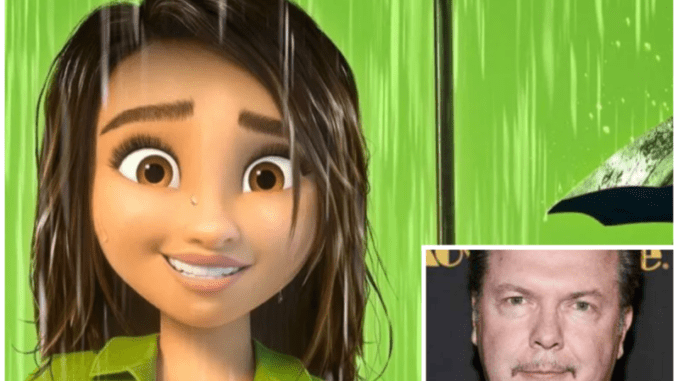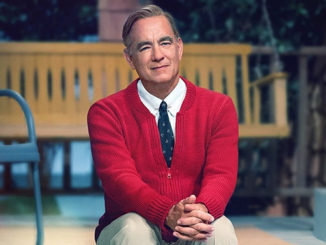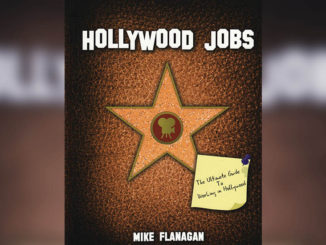
By Rob Feld
William J. Caparella went to college to study aviation, but the film classes his roommate was taking seemed like fun and involved far less math. The educational swerve was intended as a stopgap until he figured out a new path, but while sitting there surrounded by 16mm film, he fell in love with the choice at his disposal—any scene was up to him to make or break. He was again in the cockpit.
Caparella worked his way up through PA jobs, but his big break came when an editor he had been assisting, Mike Kelly, took him to work in his first animated feature, “Mulan,” bumping him up to Additional Editor. The experience provided another moment of epiphany and has kept him in animation ever since.
Caparella joined Skydance Animation as Lead Editor in 2018. His most recent project is “Luck,” released earlier this year, a story about the unluckiest young woman in the world, Sam Greenfield, on a fantastical mission to turn her luck around. The process of creating an animated story provides different opportunities for an editor than does live action. All elements of the film remain in play throughout its creation, and the chance for an editor to impact its direction is profound.
Some excerpts from a recent conversation:
CineMontage: I always like to start with mentorship experiences, which I find inform so much for people.
William J. Caparella: For me it was Milton Spencer, in college. He gave me a great sense of work ethic, of showing up on time, being there, and doing more than is expected of you. I think that’s part of the passion. When you have the passion in what you’re doing, you’re not working for a living. You’re doing what you love, and you just happen to be getting paid for it. So, he really stressed the importance of tenacity, the expectations of other people, and putting your best foot forward.
CineMontage: Editing animation is really a different job than cutting live action, isn’t it?
William J. Caparella: Absolutely. In every aspect of it. To their credit, in live action, they are making things work with what they have. In animation, it’s constantly evolving. We even set the pacing of how a character walks across a room. Even our set is always live. You can weigh in during story meetings with, what if we did this instead? The collaboration is incredible.
CineMontage: So, walk me through the process of “Luck.”
William J. Caparella: We start in the script format. It’s sent to the story people. They draw these scenes and we cut and paste them together. Once we feel it’s working, we’ll hand it off to the layout department. Layout does camera angles and pacing and blocking and we work all that out. Then it goes into animation, which is where you get the performances, character movements, and lighting. But what I love is that I get to weigh in at each step of that process. I think the biggest difference between animation and a live action process is the technique of getting there. For us, we are kind of the central hub within because we have all these other departments working simultaneously—lighting, animation, layout, story. So, everything comes in and out of editorial and we’re juggling it all. We have to put up an entire show every three or four months and present it. We get executive notes, new story notes, start pushing ideas that were liked forward, and tear it all down and put it back up again. So, it’s a lot of assembling and reassembling. Story is evolving right until the end.
CineMontage: How does it work once you start bringing in actors?
William J. Caparella: We start with scratch actors to help us pace out the movie with dialogue until we bring in the actual actor, which is more expensive. So, it’s a lot of massaging of both timing and performance. It’s a lot of working endlessly with the director, trying things out, and finding moments within the dialogue that were represented visually by the characters. We worked hard to find those right takes that felt warm, that weren’t rushed. The film is constantly too long but we also want to give it air and let it breathe in those emotional moments. It was a great collaboration with everyone weighing in to find these moments and maintain the heart of the piece.
CineMontage: Do you hit hiccups going between the scratch actors and the actual performers, then?
William J. Caparella: We do go through a very extensive casting process to find the scratch actors. We put their voice up against the boards to find that right connection between this is what she looks like and sounds like. Nine out of 10 times, the actor will come in and just pluses everything that’s already been there. At just starts blossoming through these great steps from storyboards into animation and then dialogue. Then once John Debney went through and added his music, we were all just blown away. He found a theme for Sam and covered the whole film with emotion, excitement, and adventure. It’s all from scratch and I love seeing how it all builds up together.
CineMontage: Being an editor is always a fairly political position with many voices to mediate. It sounds particularly so in the case of an animation studio.
William J. Caparella: I have to make everybody happy and feel that I’m supporting their ideas. And rightly so. It’s especially important to maintain the director’s vision and giving them options. It’s deeply collaborative. It is weird because our schedules are three, four years long but yet we feel the pressure constantly. Every few months we’re putting a whole show up of quality that we feel good about, which we can build on as we go forward.
CineMontage: Storywise, what was your true north with “Luck,” that you knew would get you there four years later if you kept to it?
William J. Caparella: From the very beginning, we all knew that our lead character had to be someone everyone could relate to. Through the whole story process, we kept that focus on what kind of a person she was, that she could believably endure all her misfortune and still come out with a positive attitude.
CineMontage: What do you need from your director to be successful in this environment and process?
William J. Caparella: I think the best thing is having a vision, because it is animation. We don’t have any guide or source track. We build everything from nothing, literally a blank piece of paper. So, having a good communication with directors so that you can connect to their vision and understand what they are trying to do until it becomes a shorthand of working together. Some of the best directors I’ve worked with have had that vision, and it just becomes a question of, how do we express that now? Is it through animation or editorial or music or something else? Everything builds on that so that it gets better and better.






